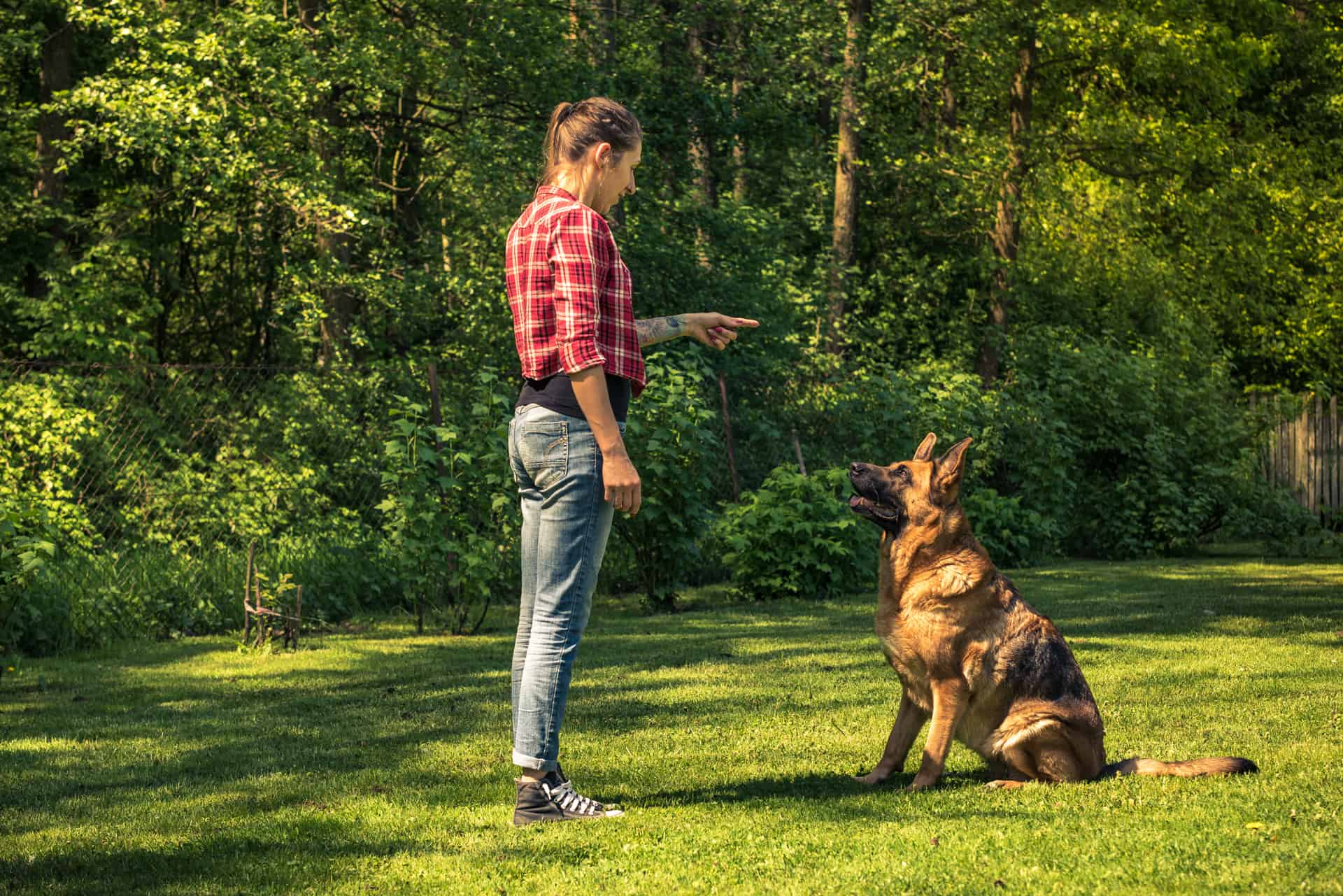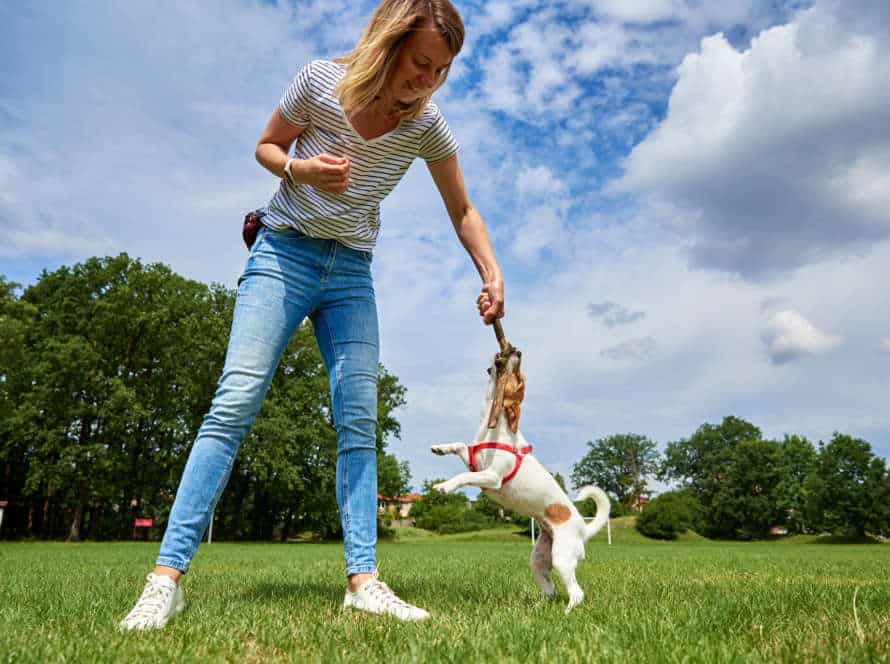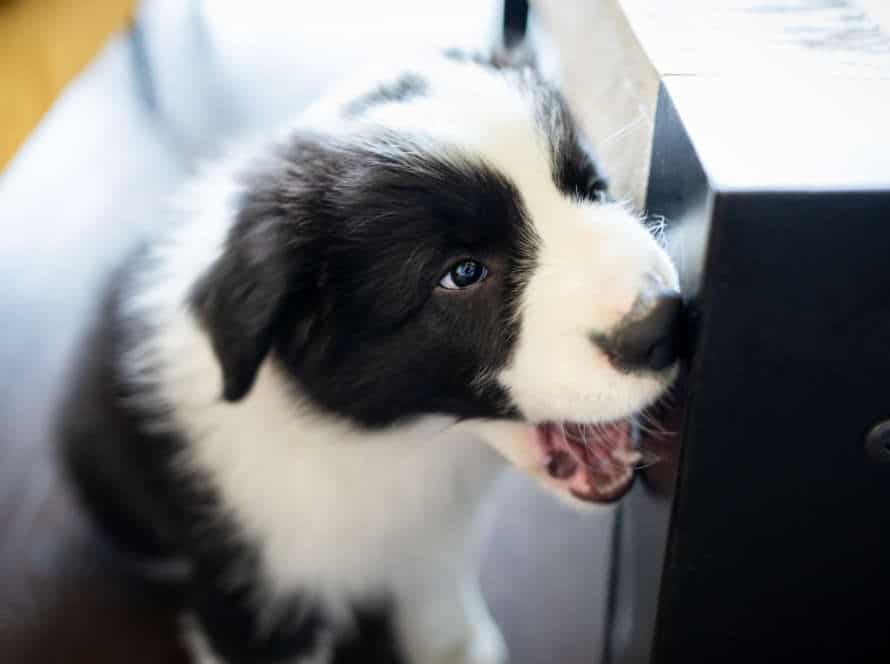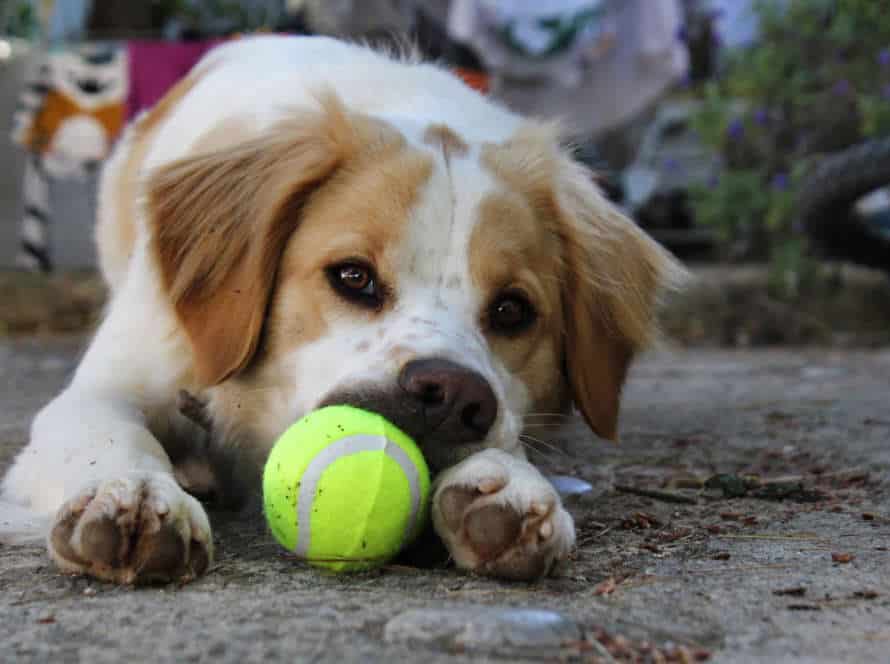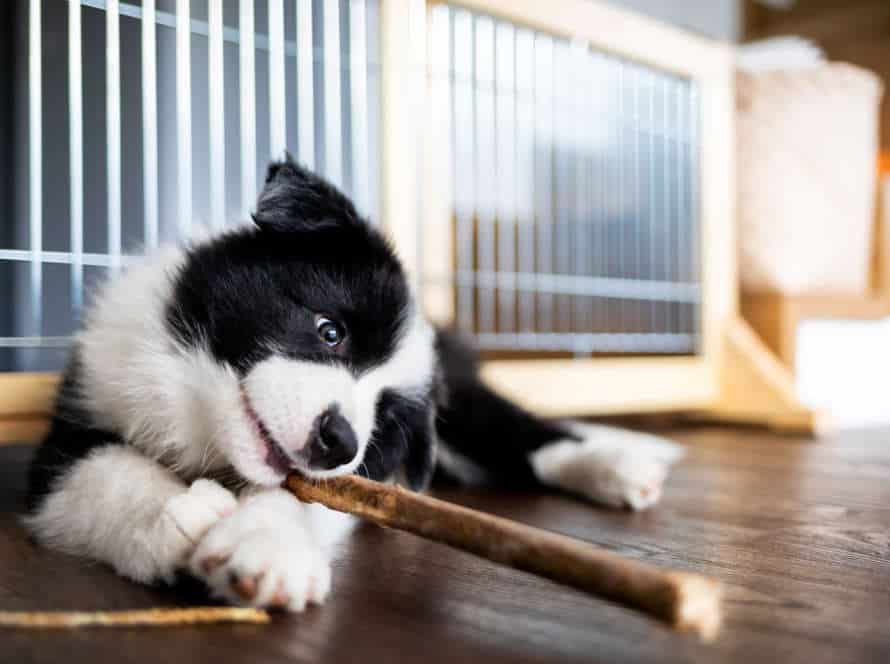Perfecting the Sit Command in Different Environments
The “Sit” command is a helpful must-know for all dogs. Perfecting it in different environments is handy. Here are steps to get your pup to understand and obey the “Sit” command in different settings:
- Start in a calm, quiet place like home with few distractions.
- Gradually add distractions like being in the backyard or a park.
- Keep repeating the command until your pup gets it without treats or rewards.
- Use positive reinforcement like petting or treats to motivate and encourage.
- Once mastered, practice occasionally for long-term success.
Pro tip: Use a happy and positive tone when giving commands. It helps build a good bond between you and your furry friend.
Importance of Teaching the Sit Command
Teach your pup the ‘sit‘ command! It’s super important. It helps a lot in different scenarios, like when you’ve got company or when you want your pup to stay put. Train them in different places, so they know what to do no matter where they are. Doing this will make sure they feel comfortable and that they’ll listen to you.
Benefits of the Sit Command for Dogs
Training your dog the “sit” command is very important. It helps with obedience, good behavior and keeping your pup safe. Here’s what the sit command does for your pup:
- – Builds obedience: Teaching the sit command is the first step. It tells your pup to follow you and builds trust between you.
- – Prevents bad behavior: The sit command can stop a pup from jumping or barking. It focuses their attention and energy.
- – Helps daily routines: The sit command helps with feeding, grooming, and leash management.
- – Enhances safety: It’s especially useful in crowded or dangerous places. You can keep your dog focused and restrained.
Tip: To teach the sit command, be consistent. Repeat the training and use positive reinforcement. Reward good behavior.
Sit Command as a Foundation for More Advanced Commands
Training your pup to sit is a key part of teaching them other commands. Here’s why this command is so important:
- Behaviour control: The Sit Command stops your dog from jumping or running into dangerous places.
- Focus & obedience: It helps your dog stay focused & listen to your commands.
- Indoors & outdoors: This command is easy to do in any place.
To get your dog to do the Sit Command perfectly, you should practice it in different settings. For example, with distractions or in busy places. Pro Tip: Use hand signals to back up your verbal commands & help your dog understand what you want them to do.
Sit Command for Behavior Control
The “Sit” command is essential to teach your dog. It helps with behavior control and sets the foundation for other commands and tricks.
Here’s why:
- Behavior control – “Sit” can calm down a pup in many situations. It stops them from jumping on people, running towards other dogs, or chasing squirrels.
- Setting the foundation – Once your dog knows “Sit“, it’s easier to teach them “Stay” and “Down“.
- Perfecting the “Sit” command – Teach your dog to do it in any environment, like busy streets, parks, or crowded areas.
Remember to use positive reinforcement when teaching “Sit” for best results.
Factors Affecting the Sit Command in Different Environments
The sit command is a must-have for any pup owner. But, it can be tough getting it right in various places. Surfaces, distractions and weather can all influence how well your pup obeys the ‘sit’ command. To make sure your pup learns the command, it’s key to understand how the environment affects its performance.
Indoor vs Outdoor Environments
The atmosphere matters a great deal when teaching your pooch commands, especially the ‘sit’ command. There are different things to take into account when training your dog in different surroundings – inside or outside.
Indoor: When schoolin’ your pup inside, think about your home’s atmosphere. Make sure to keep it consistent – create a special space for training and cut down on diversions.
Outdoor: Open air spots are full of lots of stuff that can capture your pup’s attention. Work with your furry pal in various open-air locations, and gradually make it harder. Having a leash handy will help you keep control.
Remember, the ‘sit’ command is essential and needs lots of practice and patience for your pup to get the hang of it in any environment. Keep practising, and shortly your doggy will be an ace sitter!
Presence of Distractions
Distractions can hugely impact a dog’s ability to obey the ‘sit’ command in various settings. There are numerous factors that can change the command’s effectiveness.
- Location: Is it in a recognised place or somewhere new?
- Distance: Will they obey from far away if there is too much going on around them?
- Exposure: Do other dogs or people around make it difficult to obey?
- Duration: Can they stay still for an extended period?
Knowing these factors is key for mastering the ‘sit’ command in different environments. With the right training, patience and consistency, you can teach your dog to obey the command, wherever they are!
Familiarity with the Environment
Familiarity with the environment is essential for nailing the ‘sit’ command. Noise, temperature and distractions all make a difference. Here’s how to master the command in different settings:
- Start inside, where it’s quiet. Move to noisier places as your dog gets comfortable.
- Use treats and praise to motivate them.
- Practice the command in parks and bad weather.
- Stay consistent. Keep sessions short and fun for your pup.
Pro Tip: Consistency and patience are key. With time and effort, your dog will improve. Remain calm and positive throughout!
Impact of Weather Conditions
Weather can dramatically affect a pup’s ability to obey the ‘sit’ command in diverse surroundings. Factors that impact the command include: temperature, humidity, wind speed, and precipitation.
When it’s hot and sticky, canines may become sluggish, making it harder to follow orders. Likewise, in chilly or wet climates, dogs may be more preoccupied with finding shelter, making it hard to concentrate on training.
Blustery conditions can also knock the ‘sit’ command off balance, as strong gusts may spook dogs and cause them to lose focus.
To master the ‘sit’ command in various weathers, it’s essential to train your pooch in different climates to help them concentrate and obey orders despite distractions. Plus, treats and positive reinforcement can motivate your pup and keep them engaged.
Steps for Teaching the Sit Command
Teaching a dog to sit is key! Practice and reward-based training can make it reliable. Let’s go over the steps to teach your pup. So, it can be successful in any environment!
- Start with your dog in a standing position.
- Motivate your dog by holding a treat in front of its nose and then raising it upwards.
- As the dog’s head moves up, its bottom will go down. Once the dog is in a sitting position, say “Sit!”
- Immediately give your dog a treat.
- Practice regularly and reward your dog every time it follows your command.
Choosing the Right Training Method
Training your pup is a must for proper obedience. Teaching the ‘sit’ command is a great place to start. Here’s how:
- Start off in a quiet, distraction-free area, like your home or a fenced backyard.
- Say “sit” while pushing your pup’s bottom down and reward with a treat.
- Repeat the command, adding distractions like toys or other people.
- When your pup has the command mastered, practice it in different places like parks, streets or dog-friendly stores.
Remember to be consistent and use positive reinforcement. An obedient and well-trained pup brings joy and keeps them safe in public.
Starting with the Basics: Luring and Rewarding
Training your pup the “sit” command is essential. Follow these steps to help them learn it in different spaces.
- Get your dog’s favorite treats and find a distraction-free area to start.
- Stand in front of your pup, with the treat in hand, and let them sniff it.
- Lift the treat up, so your pup follows it, causing their head to move and butt to lower.
- As they sit, give them the treat and praise with words like “good dog” or “sit“.
- When they’ve mastered “sit” in a calm space, make the area more distracting and practice in different places.
With regular practice, your pup will learn to sit on command, no matter where they are.
Progressing to Advanced Techniques: Verbal and Hand Signals
Once your pup is comfy with ‘sit’, progress to teaching them with verbal & hand signals. That way, you can communicate in noisy environments or when speaking isn’t possible. Here’s how:
- Hold a flat hand in front of you, palm facing up.
- Say the command & use the hand signal at the same time.
- Treat or praise your doggy when they respond correctly to the signal.
- Gradually reduce verbal command until only the hand signal is used.
- Test different hand signals. Take them to different places to practice.
Pro tip: Keep training brief & fun to keep them engaged & motivated!
Incorporating Distractions and Environments in Training
Training a pup can be tricky. They must learn to obey commands in different places, with distractions. Here’s how to teach them to sit on command, even when it’s noisy:
- Stand in front of your dog in a quiet spot at home.
- Put a treat near their nose so they sniff it.
- Move the treat up and the pup’s head will follow. Its backside will lower and as soon as it sits, say “sit” and give them the treat.
- Progressively make it harder by changing locations and adding distractions.
Pro tip: Give rewards for obeying commands wherever you are. This will help them remember to obey.
Common Mistakes to Avoid While Teaching the Sit Command
Teaching your pooch the “sit” command is essential for obedience training. To get the best results, practice it in various surroundings. Unfortunately, errors can happen when teaching the “sit” command. This article will discuss the common mistakes to dodge when teaching the “sit” command.
Inconsistency in Training
Inconsistency in training can be a big flop when teaching your pup the “sit” command. To ace this command in all kinds of scenarios, these tips are a must:
- Start in a peaceful environment with few distractions. Gradually add more distractions as your pup gets more comfortable.
- Utilize a consistent verbal command. As soon as your pup does the command correctly, reward them.
- Train the pup in diverse places – inside and outside. This helps them understand the command in any setting.
- No punishments or negative reinforcement when your pup doesn’t obey. This can be confusing and ruin their training.
With positive and consistent training, your pup will ace the sit command and obey reliably wherever.
Using Punishments instead of Rewards
Avoid a common error: don’t use punishments instead of rewards while teaching your dog the sit command. Positive reinforcement is the most effective and humane way to train dogs and create a strong connection with them. If you punish your pup for not understanding or obeying the command, it can lead to fear, anxiety, and aggression.
Reward instead. Try treats, praise, toys, and belly rubs to promote good behavior and reinforce the sit command. Here are some tips to perfect the sit command in various places:
- Start in a quiet, distraction-free area. Then progress to more difficult settings.
- Use hand signals and verbal cues to help your pup understand.
- Maintain eye contact and a confident stance to show authority.
Patience, consistency, and positive reinforcement are essential for successful dog training.
Skipping Training Steps or Rushing the Process
Don’t skip steps or rush your pup when teaching the ‘sit’ command! To get it right in different environments, follow these steps:
- Start with basic obedience commands, like “come” and “stay”.
- When your doggo responds well to those, move on to “sit”.
- Hold a treat over their nose, then move it back over their head. They should naturally sit to see the treat.
- As soon as their bottom touches the ground, say “sit” and give them the treat.
- Repeat the command a few times to master it.
By following these steps and not rushing, your pup will learn how to sit in various places. Pro tip: Reinforce learning with positive reinforcement, like playtime or verbal praise.
Troubleshooting: Dealing with Sit Command Challenges
Training a pup to sit is important in basic obedience. It can be tough if the environment is distracting. Do it in small bits, then increase the time and difficulty.
Here’s some help for troubleshooting and dealing with issues:
Non-Compliance or Refusal to Sit
Non-compliance or refusal to sit from your pooch during training can be frustrating. Yet, it’s important to recall that there are various strategies to handle these challenges. Here are some tips for mastering the sit command in different surroundings:
- Mix up training areas. Practicing sit in familiar places like your living room may make your pup too reliant on your signals to follow. Change up your training spots regularly to teach your dog to do the command in various settings.
- Use treats and positive reinforcement. Give treats to reward good behavior when your pup sits on cue. But, avoid giving treats when it fails to obey the command.
- Be consistent. Pups flourish on routine and consistent instruction. Use the same cues when training. Avoid confusing commands that may lead to non-compliance.
- Be patient. Some dogs take longer to learn than others. Be patient with your canine friend. Don’t punish or scold it for slow learning.
- Recognize when to take a break. If your pup is struggling and you are not making progress, take a break from training and start again at another time.
The sit command is one of the simplest yet most significant dog obedience commands. With constant training, patience, and positive reinforcement, your dog will learn to sit on cue, even in tough environments.
Difficulty Maintaining the Sit Position
Having difficulty teaching your pup to sit? Here are some tips to help perfect the command in different environments.
- Lure your dog into sitting with a treat, and say “sit.” Hold the treat close to their nose and say “stay,” while making eye contact.
- Reward them with the treat after a few seconds of maintaining the position, increasing the duration as they get better.
- Practice the command in different places, with growing distractions.
Pro Tip: Use positive reinforcement & patience when training. Avoid punishment or physical force, as it can lead to unwanted behavior.
Stumbling on Pronunciation or Confusing the Commands
Many dog owners and trainers find it tough to get their pooch to do the “Sit” command. Here are some tips to help master this command no matter the environment:
- Use one single word – like “Sit” or “Park” – and not multiple ones. This prevents confusion.
- Train your pup in different places, so they understand the command no matter where they are.
- Add visual cues along with verbal commands until they understand what you want them to do.
- Reward your pup for obeying the command. This will encourage them to do it again.
By following these tips, pet owners and trainers can perfect the sit command.
Pro-tip: Keep training sessions short and sweet, so your pup won’t get bored or overwhelmed.
Conclusion: Review and Reinforce the Sit Command
Once your dog has nailed the ‘sit’ command in different places, you need to keep reviewing and boosting it. It’s all about practice and regularity. With consistent repetition and reinforcement, the ‘sit’ order will become second nature to your pup. They’ll then respond swiftly and confidently anywhere.
Let’s check out the top tips for reviewing and reinforcing the ‘sit’ command:
Recap of Essential Sit Command Information
To sum up, the ‘sit’ command is a must for all doggies. It’s not only helpful in everyday life, but it also helps to create a strong bond between pet and owner. Here’s a recap of some advice to perfect the ‘sit’ command:
- Repetition is key – so stay patient and keep practicing.
- Use positive reinforcement like treats and verbal praise to motivate your pooch.
- Train the ‘sit’ command in different environments to help your pup learn to obey no matter the situation.
- Be consistent with your commands and body language when giving the ‘sit’ command.
- Keep training sessions short and fun.
With these tips, you can reinforce the ‘sit’ command and have a perfectly trained pet who listens and obeys in any situation.
Tips for Consistency and Reinforcement
To get your doggo to master the “sit” command, consistency and reinforcement are so key! Here are some helpful tips to help you out:
- Use the same verbal and physical cues to signal the “sit” command in all environments.
- Train your pup in different places so they know the command in any environment.
- Offer treats or praise when they do the command right.
- Incorporate distractions into your training to help them understand the “sit” command anywhere.
By following these steps consistently, your pup will soon obey the “sit” command in any environment.
Next Steps for Successful Sit Training.
After your pup learns to sit, review and reinforce the command in different places. Here’s how:
- Practice in new spots, like parks or sidewalks.
- Reinforce with treats or words of praise.
- Train in distracting environments, like around other pooches or people.
- Increase duration or distance.
By following these tips, your pup will be able to sit reliably in any environment. Pro tip: Be consistent in reinforcing behaviors. Regular practice and positive reinforcement will keep your pup motivated.
Frequently Asked Questions
Q: Can I use treats when training my dog to sit in different environments?
A: Yes, treats can be a useful tool when training your dog to sit in different environments. However, it is important to gradually reduce the dependence on treats and transition to verbal cues and positive reinforcement.
Q: How do I teach my dog to sit in noisy and distracting environments?
A: Gradual exposure to noisy and distracting environments is key. Start with quiet environments and gradually increase the noise level and distractions as your dog becomes more confident and reliable with the sit command.
Q: Is it necessary to use a leash when training my dog to sit in different environments?
A: Depending on the situation, a leash can be useful when training your dog to sit in different environments. It can help you control your dog’s movements and ensure their safety, especially in busy or potentially dangerous environments.
Q: What are some common mistakes when training a dog to sit in different environments?
A: Common mistakes include inconsistent training, using punishment instead of positive reinforcement, and expecting too much too soon. It is important to be patient and consistent in your training, and to reward your dog for their successes.
Q: How long does it take to perfect the sit command in different environments?
A: The time it takes to perfect the sit command in different environments can vary depending on the dog’s age, temperament, and previous training. However, with consistent and positive training, most dogs can learn to reliably sit in different environments within a few weeks to a few months.

